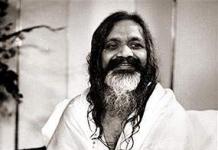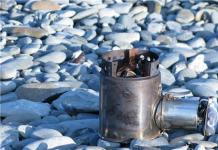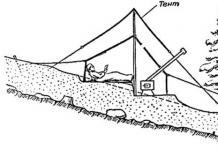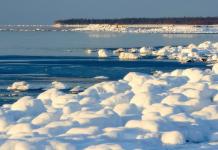A very valuable article for both the viewer and the professional artist.
Why is the Aivazovsky Sea so alive, breathing and transparent? What is the axis of any of his paintings? Where should we look to enjoy his masterpieces to the fullest? As he wrote: is it long, short, joyful or painful? And what does impressionism have to do with Aivazovsky?
Of course, Ivan Konstantinovich Aivazovsky was born a genius. But there was also a craft that he mastered brilliantly and in the intricacies of which one wants to understand. So, from what were the sea foam and moon paths of Aivazovsky born?
"Secret colors", Aivazovsky wave, glazing
Ivan Kramskoy wrote to Pavel Tretyakov: “Aivazovsky probably has the secret of composing paints, and even the paints themselves are secret; I have never seen such bright and pure tones even on the shelves of Muscat shops. Some of Aivazovsky's secrets have come down to us, although the main one is not a secret at all: in order to write the sea like that, you need to be born by the sea, live a long life near it, for which you never get fed up with it.
The famous “Aivazovsky wave” is a foamy, almost transparent sea wave, which feels like it is moving, swift, alive. The artist achieved transparency using the glazing technique, that is, applying the thinnest layers of paint on top of each other. Aivazovsky preferred oil, but often his waves seem like watercolors. It is as a result of glazing that the image acquires this transparency, and the colors seem very saturated, but not due to the density of the stroke, but due to the special depth and subtlety. Aivazovsky's virtuoso glazing is a delight for collectors: most of his paintings are in excellent condition - the thinnest layers of paint are less prone to cracking.
Aivazovsky wrote rapidly, often creating works in one session, so his glazing technique had author's nuances. Here is what Nikolai Barsamov, the director of the Feodosia Art Gallery and the greatest connoisseur of Aivazovsky's work, writes about this: “... he sometimes glazed water over a semi-dry underpainting. Often the artist glazed the waves at their base, which gave depth and strength to the colorful tone and achieved the effect of a transparent wave. Sometimes glazing darkened significant planes of the picture. But glazing in Aivazovsky's painting was not an obligatory last stage of work, as was the case with the old masters with the three-layer method of painting. All his painting was basically carried out in one step, and glazing was often used by him as one of the ways to apply a paint layer on white ground at the beginning of work, and not just as final registrations at the end of work. The artist sometimes used glazing at the first stage of work, covering significant planes of the picture with a translucent layer of paint and using the white ground of the canvas as a luminous lining. So sometimes he wrote water. Skillfully distributing a layer of paint of various densities over the canvas, Aivazovsky achieved a true transmission of the transparency of water.
Aivazovsky turned to glazes not only when working on waves and clouds, but with their help he was able to breathe life into the land. “Aivazovsky painted earth and stones with coarse bristly brushes. It is possible that he cut them on purpose so that the hard ends of the bristles would leave furrows on the paint layer, says art historian Barsamov. - The paint in these places is usually laid in a dense layer. As a rule, Aivazovsky almost always glazed the ground. The glazing (darker) tone, falling into the furrows from the bristles, gave a kind of liveliness to the colorful layer and greater reality to the depicted form.
As for the question “Where did the colors come from?”, it is known that in recent years he bought paints from the Berlin company Mewes. Everything is simple. But there is also a legend: as if Aivazovsky bought paints from Turner. Only one thing can be said about this: it is theoretically possible, but even if so, Aivazovsky definitely did not paint all 6,000 of his works with Turner paints. And the picture that the impressed Turner dedicated the poem to was created by Aivazovsky even before he met the great British marine painter.
Ivan Constantinovich Aivazovski. Bay of Naples on a moonlit night.
“In your picture I see the moon with its gold and silver, standing above the sea, reflected in it. The surface of the sea, on which a light breeze catches up with a quivering swell, seems to be a field of sparks. Forgive me, great artist, if I made a mistake in mistaking the picture for reality, but your work fascinated me, and delight took possession of me. Your art is eternal and powerful, because genius inspires you,” William Turner’s poems about Aivazovsky’s painting Bay of Naples on a Moonlit Night.
Ivan Constantinovich Aivazovski. Among the waves.
The main thing is to start, or At the pace of Aivazovsky
Aivazovsky always began work with the image of the sky, and he wrote it in one go - it could be 10 minutes or 6 hours. He painted the light in the sky not with the side surface of the brush, but with its end, that is, he “illuminated” the sky with numerous quick touches of the brush. The sky is ready - you can relax, get distracted (however, he allowed himself this only with paintings that took a lot of time). The sea could write in several passes.
To work on a painting for a long time in the view of Ivan Aivazovsky is, for example, to paint one canvas for 10 days. That is how much it took the artist, who at that time was 81 years old, to create his largest painting - "Among the Waves". At the same time, according to his confession, his whole life was a preparation for this picture. That is, the work required maximum effort from the artist - and for ten whole days. But in the history of art, it is not uncommon for paintings to be painted for twenty or more years (for example, Fyodor Bruni painted his “Copper Serpent” for 14 years, started in 1827, and finished in 1841).
In Italy, Aivazovsky at a certain period made friends with Alexander Ivanov, the same one who wrote The Appearance of Christ to the People for 20 years, from 1837 to 1857. They even tried to work together, but soon quarreled. Ivanov could work on a sketch for months, trying to achieve the special accuracy of a poplar leaf, while Aivazovsky managed to go all around and paint several pictures during this time: “I can’t write quietly, I can’t pore for months. I don’t leave the picture until I speak out.” Such different talents, different ways to create - hard labor and joyful admiration of life - could not stay close for long.
Ivan Aivazovsky next to his painting, photograph, 1898.
Aivazovsky at the easel.
“The atmosphere of the workshop was exceptionally simple. In front of the easel was a simple chair with a wicker reed seat, the back of which was plastered with a rather thick layer of paint, since Aivazovsky had a habit of throwing his hand with a brush behind the back of the chair and sitting half a turn to the picture, looking at it, ”- from the memoirs of Konstantin Artseulov , this grandson of Aivazovsky also became an artist.
Creativity as joy
Aivazovsky's muse (forgive us this pompousness) is joyful, not painful. “By the ease, apparent ease of hand movement, by the satisfied expression on his face, one could safely say that such work is a real pleasure,” these are the impressions of the official of the Ministry of the Imperial Court, the writer Vasily Krivenko, who watched how Aivazovsky works.
Aivazovsky, of course, saw that for many artists their gift is either a blessing or a curse, other paintings are written almost with blood, exhausting and exhausting their creator. For him, approaching the canvas with a brush has always been the greatest joy and happiness, he acquired a special lightness and omnipotence in his workshop. At the same time, Aivazovsky carefully listened to practical advice, did not dismiss the comments of people whom he valued and respected. Although not enough to believe that the lightness of his brush is a drawback.
Plein air VS workshop
Only the lazy did not talk about the importance of working with nature in those years. Aivazovsky, on the other hand, preferred to make fleeting sketches from life, and write in the studio. “Preferred”, perhaps, is not quite the right word, it's not about convenience, it was his principled choice. He believed that it was impossible to depict from nature the movement of the elements, the breath of the sea, the peals of thunder and the flashing of lightning - and that was what interested him. Aivazovsky had a phenomenal memory and considered his task "in nature" to absorb what was happening. Feeling and remembering, in order to return to the studio, throw out these feelings on the canvas - that's why nature is needed. At the same time, Aivazovsky was an excellent copyist. During training with Maxim Vorobyov, he demonstrated this skill to the fullest. But copying - at least someone's paintings, even nature - seemed to him much less than he was able to do.
Ivan Constantinovich Aivazovski. Amalfi Bay in 1842. Sketch. 1880s
Ivan Constantinovich Aivazovski. Coast in Amalfi.
About the rapid work of Aivazovsky and what his sketches from nature were, the artist Ilya Ostroukhov left detailed memories:
“I accidentally got acquainted with the manner of performing artworks by the late famous marine painter Aivazovsky in 1889, during one of my trips abroad, in Biarritz. At about the same time that I arrived in Biarritz, Aivazovsky also arrived there. The venerable artist was already then, as I remember, about seventy years old ... Having learned that I was well acquainted with the topography of the area, [he] immediately pulled me for a walk along the ocean shore. The day was stormy, and Aivazovsky, fascinated by the view of the ocean surf, stopped on the beach ...
Without taking his eyes off the ocean and the landscape of distant mountains, he slowly took out his tiny notebook and drew only three lines with a pencil - the outline of distant mountains, the line of the ocean at the foot of these mountains, and the line of the coast from himself. Then we went on with him. After walking about a verst, he stopped again and made the same drawing of several lines in the other direction.
“It’s a cloudy day today,” Aivazovsky said, “and you can only tell me, please, where the sun rises and sets here.
I pointed. Aivazovsky put a few dots in the book and hid the book in his pocket.
- Now let's go. For me this is enough. Tomorrow I will paint the ocean surf in Biarritz.
The next day, three spectacular pictures of the sea surf were really written: in Biarritz: in the morning, at noon and at sunset ... "
Ivan Constantinovich Aivazovski. Biarritz. 1889
Aivazovsky's sun, or what does impressionism have to do with it
The Armenian artist Martiros Saryan noted that no matter how grandiose the storm Aivazovsky portrayed, in the upper part of the canvas a ray of light will always break through the accumulation of thunderclouds - sometimes clear, sometimes subtle and barely noticeable: “It is in it, this Light, that the meaning of all depicted by Aivazovsky storms.
Ivan Constantinovich Aivazovski. Storm in the North Sea.
Ivan Constantinovich Aivazovski. Moonlight night. 1849
Ivan Constantinovich Aivazovski. Bay of Naples on a moonlit night. 1892
Ivan Constantinovich Aivazovski. Ship "Empress Maria" during a storm. 1892
Ivan Constantinovich Aivazovski. Moonlit night in Capri. 1841
If it is the sun, then it will illuminate the blackest storm, if it is a lunar path, then it will fill the entire canvas with its flicker. We are not going to call Aivazovsky either an impressionist or a forerunner of impressionism. But let us quote the words of the philanthropist Alexei Tomilov - he criticizes the paintings of Aivazovsky: “The figures are sacrificed to such an extent that it is not possible to recognize: in the foreground they are men or women (...) air and water flaunt.” We say about the Impressionists that the main characters of their paintings are color and light, one of the main tasks is the transmission of light-air mass. In the works of Aivazovsky, light is in the first place, and yes, quite right, air and water (in his case, this is about the sky and the sea). Everything else is built around this main thing.
He strives not only to portray plausibly, but to convey sensations: the sun should shine so that you want to close your eyes, the viewer will shrink from the wind, and recoil from the wave in fright. The latter, in particular, was done by Repin, when Aivazovsky suddenly opened the door of the room in front of him, behind which stood his "Ninth Wave".
Ivan Constantinovich Aivazovski. Ninth shaft.
How to look at Aivazovsky's paintings
The artist gave absolutely unambiguous recommendations: you should look for the brightest point on the canvas, the source of light, and, peering intently at it, slide your eyes over the canvas. For example, when he was reproached that Moonlit Night was not finished, he argued that if the viewer “turns his main attention to the moon and gradually, adhering to the interesting point of the picture, looks at other parts of the picture in passing, and beyond that, not forgetting that this is a night that robs us of all reflection, then such a viewer will find that this picture is more finished than it should be.
Ivan Constantinovich Aivazovski. Moonlit night in Crimea. Gurzuf, 1839, 101×136.5 cm.
Konstantin Aivazovsky is not one of those artists who lose inspiration in the process and leave the work unfinished. But one day this happened to him too - he did not finish the painting "The Explosion of the Ship" (1900). Death intervened. This unfinished work is especially valuable for researchers of his work. It allows you to understand what the artist considered the main thing in the picture, with the study of which elements he began work. We see that Aivazovsky began with the ship and the flame of the explosion - something that will take the viewer by the soul. And the artist left the details, on which the viewer will simply glide with his eyes, for later.
Ivan Constantinovich Aivazovski. Ship explosion. 1900
Ivan Constantinovich Aivazovski. Azure grotto. Naples. 1841
The modern viewer is sometimes discouraged by the intense color of Aivazovsky's paintings, his bright, uncompromising colors. There is an explanation for this. And this is not at all the bad taste of the artist.
Fragment of Ivan Aivazovsky's painting "Ship in the Stormy Sea" (Hermitage).
Today we look at the marinas of Aivazovsky in museums. Often these are provincial galleries, with a dilapidated interior and no special lighting, which is replaced by simple light from the window. But during the life of Aivazovsky, his paintings hung in rich living rooms and even in palaces. Under stucco ceilings, on walls pasted over with luxurious tapestries, in the light of chandeliers and candelabra. It is quite possible that the artist took care that his paintings were not lost against the background of colorful carpets and gilded furniture.
Connoisseurs say that Aivazovsky's night landscapes, which often look rustic in poor natural light or under rare lamps, come to life, become mysterious and noble, as the artist intended them to be, when viewed by candlelight. Especially those paintings that Aivazovsky painted by candlelight. ()
Painting "Among the waves" considered the pinnacle of Aivazovsky's work. It was written in 1898, when the artist was already over 80 years old.
Description of the painting "Among the Waves" by Aivazovsky
Instead of an agitated sea, the artist now depicts a raging element - a seething, covered with waves, stormy sea and a stormy sky.
On the huge canvas at the top, only a narrow strip of a stormy sky with low-rushing clouds is depicted, the rest of the space was filled with the waves of a stormy sea. A ray of the sun, breaking through the clouds, seems to be sinking into the depths of the sea. The waves foam, collide in a furious whirlpool, reaching almost natural sizes in the foreground. The compositional core of the work is the central surging wave with snow-white foam on the crest, penetrated through and through by sunlight. Like most of the artist's works, the painting "Among the Waves" was painted using an improvisational method. Everything in it is full of poetry, a special musical harmony. A striking combination of silver-gray, grayish-blue, blue-green tones. The colors of the master's palette easily and freely fall on the surface of the canvas; their layer is so thin that in some places the white color of the soil appears.
The picture perfectly conveys the plastic beauty of the raging sea. The artist, as it were, carefully examines the slightest bend of a wave, a light lace of foam, and this thoroughness does not prevent him from creating a landscape in which all the details are brought together, thanks to which a heroic and at the same time penetratingly lyrical image of the sea arises.
The picture reflects the desire for conciseness of color, concretization of the image. With passionate intensity, in a heightened emotional and extremely generalized range of colors, the beauty and power of the raging sea are expressed. With great skill, the boundless expanse of the sea, steep waves dazzling with white foam, saturated with moisture, penetrated by the sun's rays, are depicted. This spiritualized image of the sea is one of the masterpieces of Russian and world marine painting.
The life of the master passed in a continuous relationship with the sea as a symbol of space and freedom. The sea, sometimes agitated, sometimes calm or stormy, generously endowed Aivazovsky with a wealth of impressions. Aivazovsky painted his painting “Among the Waves” when he was already eighty years old. She is rightfully the pinnacle of his skill.
Furious gray waves rush over the abyss. In anger, they rush up, but leaden black clouds, driven by a storm wind, hang over the abyss. And here, as in hell, the natural element rules. The sea boils, bubbles and foams. The crests of the shafts sparkle. In addition to the sea, we see nothing in the picture. Not a single living soul can see this rampant sea element. Even a free bird is not visible on the canvas ... deserted ... Only a great artist could see this real planetary moment, remember it, and transfer it to the canvas. At this moment, one can comprehend the primordial nature of being on our earth. Through the roar and roar of the storm, a quiet melody of joy and peace is heard in the distance. It is a ray of sun breaking through the darkness. A narrow strip of light visible somewhere in the distance. In the picture, Aivazovsky depicted the sea element - the sea under a stormy sky was covered with a high wave. Colliding, the waves seem to boil. The artist in this work refused to depict the details of the picture so familiar to him - the wreckage of perishing ships lost in the boundless depths of the sea. Aivazovsky was perfectly able to dramatize his subjects, but while working on this work, he did not use any of them.
The mastery achieved in the painting "Among the Waves" is the fruit of hard and long work throughout the life of the artist. Aivazovsky worked on the painting easily and quickly. The worked hand of the artist confidently sculpted with a brush exactly the shape that the artist wanted to give it. The paint lay down exactly as his many years of experience and instinct of the great master suggested to him.
It feels like the author himself was aware that this picture in its execution is much higher than all previous works in recent years. It was this picture that he did not take out of Feodosia, despite the fact that after he finished it, he actively organized exhibitions of his works in London, Moscow and St. Petersburg. He bequeathed this work to a gallery located in his hometown of Feodosia.
Until the last years of his life, Aivazovsky experienced an influx of new ideas that excited him. Having painted 6,000 paintings, the 80-year-old master still remained a young novice artist who is looking for his own path in art.
"Among the Waves"
picture "Among the Waves" Ivan Aivazovsky wrote in the year of his eightieth birthday, just two years before his death. How and all his paintings, this poet of the water element created it easily and with love. In addition to a narrow strip of sky, the entire canvas is given to His Majesty the Sea. Completing his life journey, being at the top of his skill, the brilliant marine painter adds less and less objects foreign to the sea to his paintings: the author no longer needs either shipwrecks or people clinging to them in order to convey his feelings. There is no one and nothing here but the sea, wind, sky and ... light. As in his world-famous masterpiece The Ninth Wave, the stunning rendering of the color of light-filled water leaves in the background a feeling of fear of a storm whipping up foam and clouds, pressing an almost black stormy sky to the foamy tops of the waves.
Now the painting is stored in the Aivazovsky Art Gallery in Feodosia. But even viewing reproductions makes the heart freeze in admiration. You don't have to be an artist to appreciate the author's genius - it's enough, like him, to love the sea. The painting impresses with its craftsmanship. The sea under the brush of Aivazovsky comes to life, foamy waves seem to splash out of the screen, making it impossible to think about something else. Even the angle is chosen in such a way that it is difficult to imagine yourself standing on a rock, on board a ship, or on something else familiar. You are like the Spirit of the Lord that hovers over the waters: here and now there is nothing and no one but you and the indomitable elements. Looking at this picture, you begin to understand that the words of Aivazovsky: "The sea is my life" are not beautiful words for the public, but a reflection of his true ideals, his True Love.



































